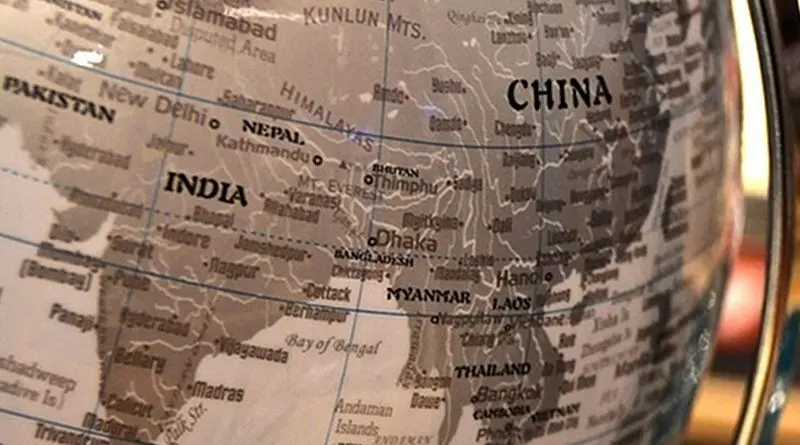Arms Control And Disarmament In South Asia: A Pragmatic Approach – OpEd
Recently India inked a $5 billion deal with Russia to buy S-400 ballistic missile defense system. The S-400 is one of the most advanced ballistic missile defense systems currently present in the world and it is the biggest arms deal in Indian history. This is among the latest development that we have seen in South Asian political landscape where growing militarization has threatened the regional peace. The situation in South Asia remained intense as ever since Sub Continent was divided by Britishers in 1947. Both India and Pakistan conducted their nuclear test in 1998 and even nuclear deterrence was not enough to provide strategic stability in the region. Militarization in South Asia remained and still is one of the most dangerous issues of global politics.
After the End of the cold war relations between states moved towards positive direction largely. Arms control and disarmament also got widespread attention at the international level. Over the years International community recognized that if want to make this world a safer place we should work in the direction to completely destroy major weapons or at least try to put control on their proliferation. After 1989 even 3 Former Soviet Satellite states give up their nuclear weapons. It was widely believed that countries will be now more willing towards solving their disputes through peaceful means.
Arms control and Disarmament are two terms which are mostly used together. We can simply define arms control as “limitation of the use, exchange, or manufacture of military weapons by nations often as a policy established through diplomatic negotiation” while disarmament “refers to measures, usually formal agreements, to reduce or completely abolish military capacities and means”. Arms control and disarmament efforts had a long history .it is usually done to minimize the chances of war. When a state conquers other states it usually impose arms control or sometime disarmament on the subjugated state. For example, in the treaty, Versailles Germany was forced to demilitarize itself by victorious states. But in modern times states, usually unilateral do the reduction in its military stockpile or some time it is done through bilateral or multilateral treaties.
In South Asia, the situation between India and Pakistan remained tense since they got Independence. Despite the arms control and disarmament efforts at international level militarization at this region is growing at a rapid pace. India is presently the fourth largest military spender in the world with an annual military budget of $66.5 billion. It was also a second-leading arms importer in the world from 2014-2018. India is also building its nuclear arsenal and is widely believed that it has 90-110 nuclear weapons and it can increase in the near future. India is also including different kind of modern weapons (T90 tanks, Advanced Towed Artillery Gun System, SU-30 MKI Aircraft, etc.) to demonstrate its military capabilities. Despite the fact that Pakistan’s arms imports decreased 39% in the last few years it will still try to decrease military asymmetry with Indian because of the continuous tension between nuclear-armed neighbors. Regardless of having economic issues, Pakistan has an annual military budget of more than $11 billion and it is believed to have 100-120 nuclear weapons.
So the question here arises that any International efforts in the field of arms control and disarmament will work in South Asia or not. The answer is negative. The reason is, India and Pakistan are arch-rival and have fought four wars. They have a long-range of issues and most important of them is the disputed region of Kashmir. Recently in February 2019, both countries have targeted different places in disputed Kashmir region while India lost a jet fighter during dog fight. In addition to this, they also have a dispute on water distribution because major rivers that flow through Pakistan have their origins in Indian occupied Kashmir while India is building dams on those rivers.
Terrorism is also a big issue between two states. India always accused Pakistan of supporting sub-conventional war in Kashmir while Pakistan maintains that India is supporting terrorists in Baluchistan and in bordering areas with Afghanistan. Besides this troops of both states are regularly engaged in ceasefire violations along Line of Control which resulted in the death of many civilian and military personals.
These issues between India and Pakistan have created an immense threat to regional stability. Any conflict between states can escalate into nuclear war that will produce catastrophic effect not only for regional states but for the whole world. Therefore unless these major issues are solved between India and Pakistan we cannot expect a demilitarized or we can say a less militarized South Asia. Because both states consider these issues vital for their national security. As Salvador de Madariaga, chairman of the League of Nations disarmament commission once said
“The trouble with disarmament was (and still is) that the problem of war is tackled upside down and at the wrong end … Nations don’t distrust each other because they are armed; they are armed because they distrust each other. And therefore to want disarmament before a minimum of common agreement on fundamentals is as absurd as to want people to go undressed in winter. Let the weather be warm, and they will undress readily enough without committees to tell them so.”
*Muhammad Rizwan is a research scholar of MS International Relations at COMSATS University Islamabad. His email address is [email protected]

